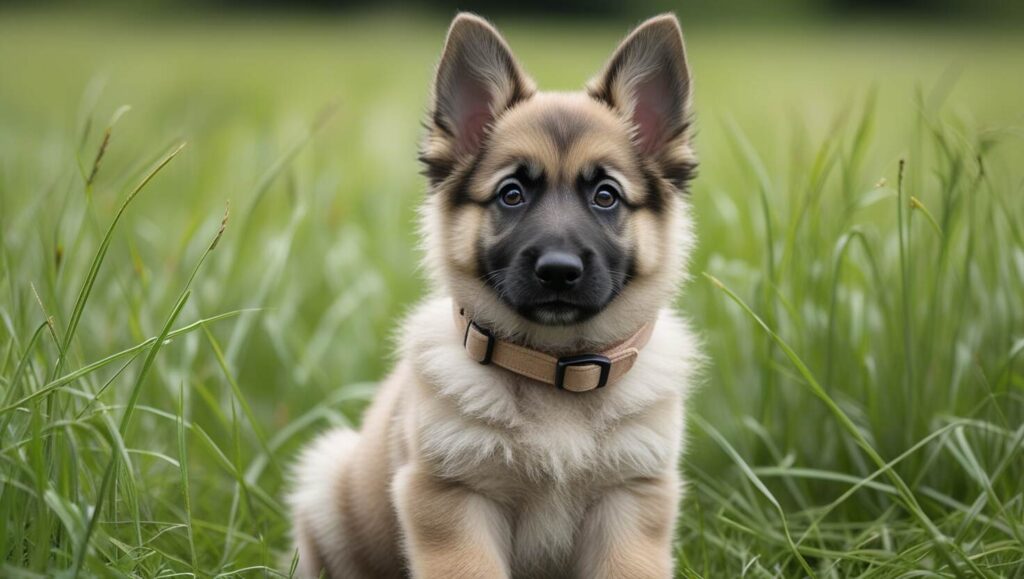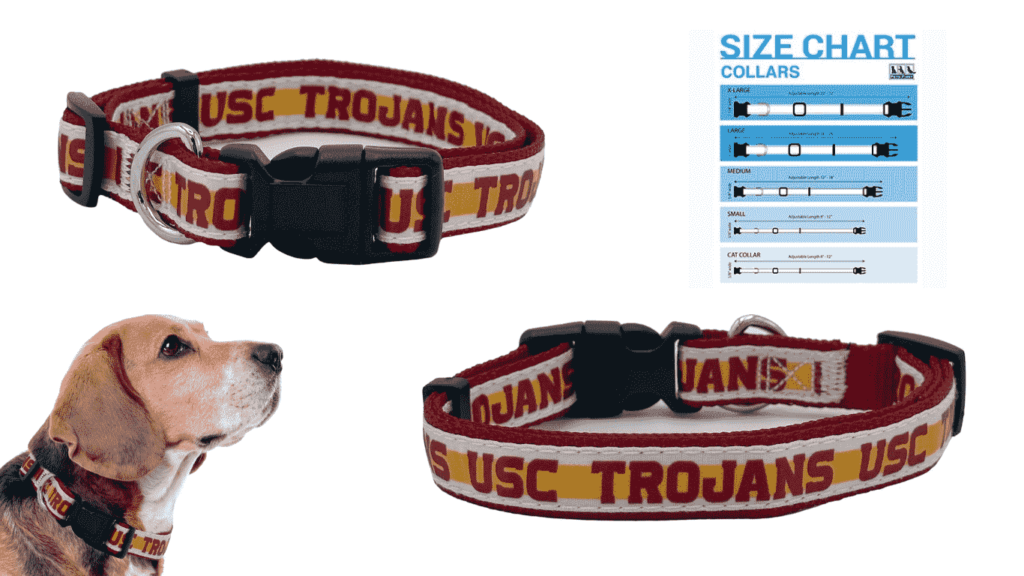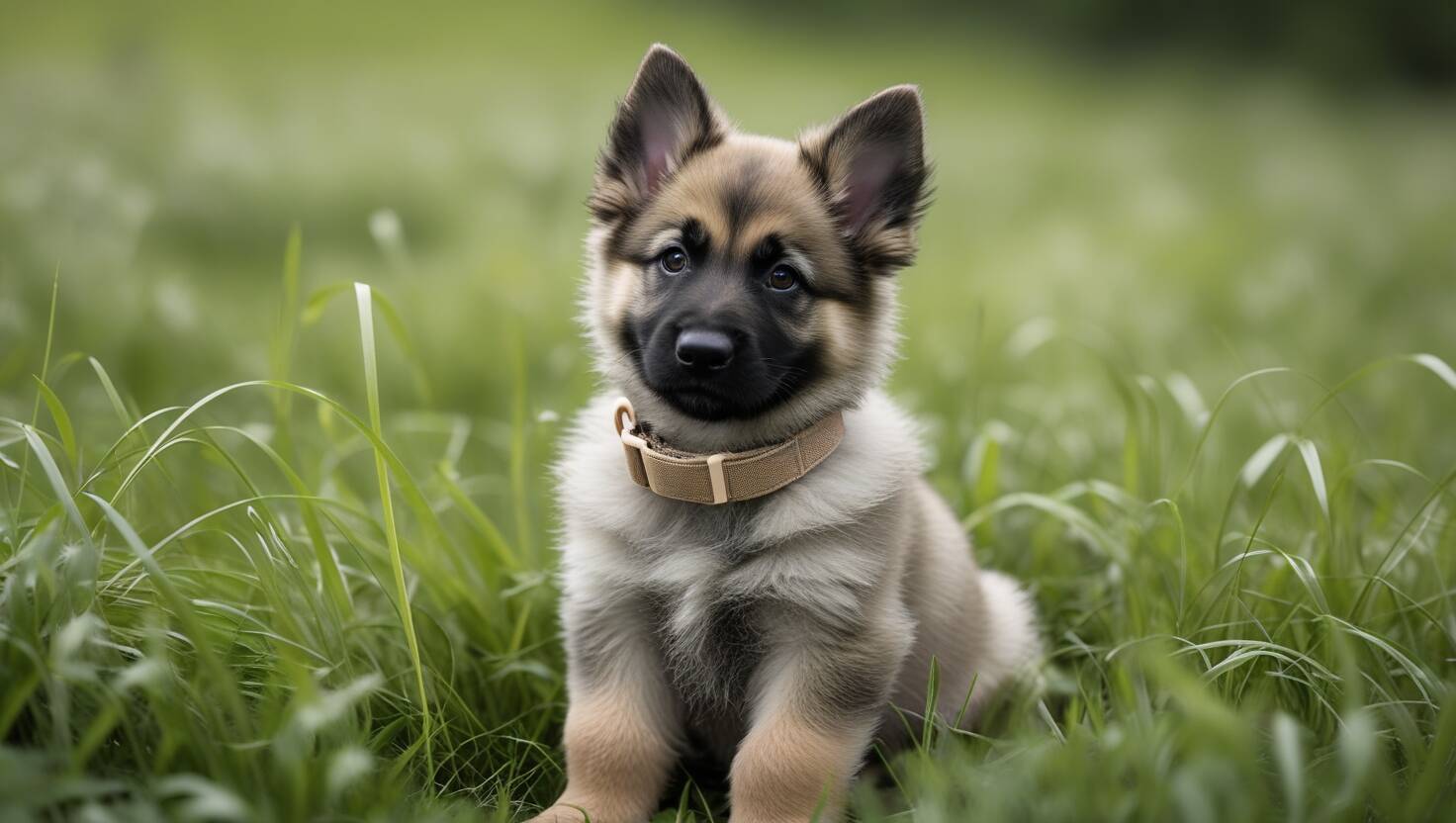What Size Dog Collar For German Shepherd?

A German Shepherd’s collar size changes as they grow:
- At 2 months: 8-10 inches (adjustable collar recommended).
- At 6 months: 12-14 inches (expect frequent changes).
- Adult size: 16-20 inches (some may need 22-26 inches).
Choosing the Right Collar for Your German Shepherd

Your fur baby will need different collar sizes as they grow. Their dog’s neck size changes quickly, so picking the right fit is important.
At 2 Months:
A 2-month-old German Shepherd puppy typically has a neck size of 8-10 inches, weighs 18-26 pounds, and stands 10-13 inches at the shoulder. The small size (8-12 inches adjustable, 0.4-inch width) of the Pets First Satin Nylon Dog Collar can be a suitable choice, but ensure it’s adjusted properly to allow for comfort and growth.
At 6 Months:
By 6 months, your German Shepherd will have grown significantly, reaching 12-14 inches in neck size, weighing 45-65 pounds, and standing 19-24 inches tall. At this stage, you may need to transition to the medium size (12-18 inches adjustable, 0.65-inch width) to ensure a comfortable and secure fit.
Fully Grown:
A fully grown German Shepherd Dog typically has a neck size of 16-20 inches, with some individuals requiring collars up to 22-26 inches depending on size and sex. The large (18-28 inches adjustable, 1-inch width) or extra-large (22-32 inches adjustable, 1.25-inch width) sizes of the Pets First Satin Nylon Dog Collar would be ideal for adult German Shepherds. If you’re looking to make your pup stand out, consider high-end designer collars from brands like Gucci or LV for a luxurious touch.
No matter the life stage, the Pets First Satin Nylon Dog Collar offers durability, vibrant team colors, and an adjustable fit to keep up with your German Shepherd’s growth while letting them show off their USC team spirit in style!
How to measure a German Shepherd dog collar?
To get the right dog collar size for your German Shepherd, you need to measure your dog’s neck correctly. Use a flexible measuring tape, wrapping it around the widest area of the neck where the collar will sit. For the ideal length, add two inches longer than the total neck measurement to ensure a snug but comfortable fit. Make sure you can slip two fingers between the dog’s neck and the collar for the best balance of security and comfort.
Choosing the Right Puppy Collar
What size collar for my Puppy?
A German Shepherd puppy grows fast, so picking the right collar size is important. At 8 weeks old, they need a soft, lightweight collar around 8-10 inches in size. Since they will outgrow it quickly, check the fit regularly and switch to a larger size by 6 months, when their neck size reaches 12-14 inches. A puppy collar size guide can be helpful in finding the best fit.
Your puppy’s first collar
When your puppy arrives home, they should start wearing a collar from day one to get used to it. Many breeders use coloured collars to distinguish puppies in a litter, but a breathable, non-abrasive material is key for comfort. Remove the collar for a couple of hours daily, especially when they sleep or during grooming like a brush or bathe, to avoid irritation on their skin.
How soon should I get a collar?
A collar is needed sooner than you might think. Under the Control of Dogs Mandate, 1992, all dogs in public must wear a collar with an identification tag including the owner’s first name, surname, postcode, first line of address, vets contact, and telephone number. Since microchipping became mandatory for pet dogs in 2016, a microchip helps find a missing puppy quicker when scanned. If you need options, browse a full range of collars, leads, harnesses, and accessories in an online shop, and use code puppy10 at checkout for 10% off your first collar.
Types of Collars and Harnesses
Finding the perfect collar for your German Shepherd depends on their training, comfort, and safety. A strong and active pup needs a durable material that keeps them safe while preventing slipping loose. Brands like Mimi Green offer engraved ID buckles with fun designs, ensuring style and security. While conventional collars are common, some dogs may need a corrective collar or a harness for better control. Whether you’re looking for temporary correction tools, gentle correction, or a comfortable walking aid, choosing the right type is important.
Choke Collar
A choke collar is a temporary correction tool that tightens around the neck when the lead is pulled, grabbing the dog’s attention and preventing slipping loose. However, these can be dangerous if used unsupervised and are not recommended for everyday use. A corrective collar should only be used under the guidance of a qualified dog trainer to ensure safety and proper use.
Head Collar
A head collar, like gentle leaders or halters, wraps around the head and ears to apply gentle correction for pulling. It directs the dog’s movement by controlling their weakest point, not their neck. Unlike a muzzle, it allows dogs to pant, drink, and bark freely, making it a safe and effective choice for strong German Shepherds.
Harness
For working dogs or those with respiratory or throat problems, a harness is often a better option than a conventional collar. A No-Pull Harness applies gentle pressure on the chest, which discourages pulling and provides less control but more comfort. When selecting a perfect collar or harness, always consider your pup’s needs to keep them safe and comfortable.
Finding the Right Collar for Your German Shepherd
Choosing the right collar for a German Shepherd depends on their temperament, training needs, and comfort. These strong dogs need a durable collar that won’t cause discomfort or risk slipping free. Materials like leather and nylon are common options, while special collars like martingale and prong collars provide extra control when needed. Proper sizing is essential, as German Shepherds have thick necks and require a well-fitted collar for leading on a leash. If your dog struggles with respiratory or throat problems, a harness may be a better alternative to a conventional collar.
What collar is best for a German Shepherd?
A German Shepherd needs a right collar that provides durability and comfort. For dogs with sensitive skin, a leather collar is a great choice, while nylon collars are lightweight and water-resistant. If your dog is calmer and obedient, a standard collar works well. However, a martingale collar is a humane option that prevents dogs from slipping free by tightening slightly when the leash is pulled.
Are prong collars good for German Shepherds?
A prong collar is a tool used for training strong pullers but should only be used by a dog expert. It works by applying slight pressure when the dog pulls, discouraging bad behavior. However, if worn incorrectly or unsupervised, it can cause harm. A metal choke collar is not recommended, as it can be dangerous if a dog gets startled and reacts suddenly.
How long and wide should a German Shepherd collar be?
Since German Shepherds have thick necks, measuring properly is key. Use a flexible measuring tape, wrapping it around the area where the collar sits. The ideal length is the total neck measurement plus two inches longer. Most adult German Shepherds need an 18-24 inches collar that is 1-1.5 inches wide to prevent slipping free while ensuring comfort and security.
Should German Shepherds wear a harness?
For dogs with respiratory or throat problems, harnesses are a better choice than conventional collars, which can be uncomfortable for strong dogs. A harness reduces pulling power and puts less strain on the neck, making it easier for leading on a leash. While a collar provides better control, a harness is safer for extended wear, especially for highly active or working German Shepherds.
Kindly note: The content shared in this blog is gathered from online sources, some of which may not be verified. For accurate guidance on caring for your dog, it is recommended to seek advice from a qualified veterinarian.

